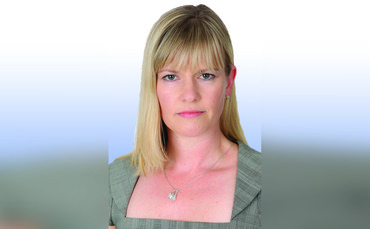The firm often cites its investment style as "riding a tractor on the motorway, plodding in the slow lane", to help investors reach their goals.
However, this focus on wealth preservation does not mean they have not taken bold decisions in the past challenging conventional market views.
Ruffer cuts bond and equities exposure after 'complacent' market rally
This ranges from not holding banks, housing or commodity companies prior to the Global Financial Crisis - instead the firm held masses of yen and Swiss Francs - to using derivatives from 2016 onwards - something which paid off during Covid - and using Bitcoin back in 2020.
The proof is in the pudding, with the strategy historically outperforming in volatile periods like the dotcom bubble, the GFC and Covid.
Indeed, over the past 28 years, the firm has produced an annualised return of 8.2%. But questions have been asked about the fund house's recent performance.
The firm launched the WS Ruffer Diversified Return fund in September 2021 as an extension of its wider strategy.
Ruffer boosts portfolio duration in October after US Treasury rout
Managed by investment directors Duncan MacInnes and Ian Rees, the launch was a response to a growing number of investors who wanted access to the strategy but required greater liquidity and daily dealing.
Beyond this the strategy is unchanged. The fund aims not to lose money on any 12-month rolling basis, providing genuine protection in times of market stress.
Asset allocation is the key driver of returns in the portfolio, which typically has 60-80 equities and 15-20 bond positions.
Its 2021 launch year was also the time Ruffer started moving more defensively on markets. It was the right move for 2022, as stocks and bonds both fell markedly; by contrast, the fund was up over 5%.
But 2023 has been a different story. The old saying "do not fight the Fed" seems to have fallen on deaf ears, with equities showing resiliency amid the Federal Reserve's attempts to cool markets down.
Those on the defensive trade, like Ruffer, have suffered.
Federal Reserve sparks market rally as it signals rate cuts in 2024
MacInnes says few would have had any confidence in markets at the start of 2023 if they would have known base rates would hit 5% in the UK and US, we would have an ongoing war in Ukraine and the threat of one in the Middle East, and a potential banking crisis.
"Not many would think the Nasdaq would be up by 25% and volatility would be down by 40%," he added.
A trio of decisions hit performance, but the outlook remains unchanged
The fund is now down 7.5% in 2023^ (and down 6% over 12 months^^). While the growth bucket, specifically equities, has been too small (at one point near record lows for the firm), MacInnes pointed to three specific underlying causes for this poor performance.
FundCalibre Elite Radar: TB Amati Strategic Metals fund
The first is the decision to start adding bond duration to the portfolio throughout 2023. The team started the year at zero and are now close to six, only for bond yields to keep rising.
Although this has hurt, the team does feel it is an attractive position from here.
The second has been their protection options on equities, volatility and credit spread instruments - all of which suffered as markets remained buoyant.
The third is currencies, specifically a big position in the yen, which the team believes looks attractive given valuations sit at 50-year lows. However, despite yield curve control ending in Japan - and its safe haven status - the yen has fallen heavily in 2023.
Despite these challenges, the team's view is as strong as ever with regards an economic slowdown. In October, it added 10% in US 10yr TIPs and 5% of US 30yr nominals. A position in gold, a safer bet if rates have peaked, and copper, to offer some balance, have also been added.
Ultimately, the team believes there is simply too much debt in the world to cope with 5% interest rates.
US inflation falls to 3.1% in November
MacInnes says: "There is something like $300trn of global debt, if this is refinanced to 5%, that is $15trn of debt added. There is a lot of evidence to suggest government budgets do not work at 5% so we simply cannot stay here for an extended period."
But how far are we from the breaking point for markets? MacInnes said history shows that once the Fed gets to the top of the hiking cycle, it typically takes seven months for the first cut in rates, taking us towards the end of Q1 2024.
While the Fed has said it will not cut until inflation is squashed, MacInnes argued market weakness means it may have to cut sooner - the only difference this time is it is doing so to tackle economic weakness and not save the S&P.
He said: "We are asking people to stick with us, we have kicked the tyres on our view and we do not think we are wrong. There are so many geopolitical and economic concerns and when you look at markets - the risk premiums do not reflect the risks we see - you are not being compensated for that.
Ruffer has historically been the place to be when times get tough and we see no reason why that will not be the case again. The firm's timing may not be perfect, but if things turn it could be an ideal solution in a global recession.
^Source: FE Analytics, total returns in pounds sterling, 30 December 2022 to 3 November 2023
^^Source: FE Analytics, total returns in pounds sterling, 3 November 2022 to 3 November 2023
Juliet Schooling Latter is research director at FundCalibre


